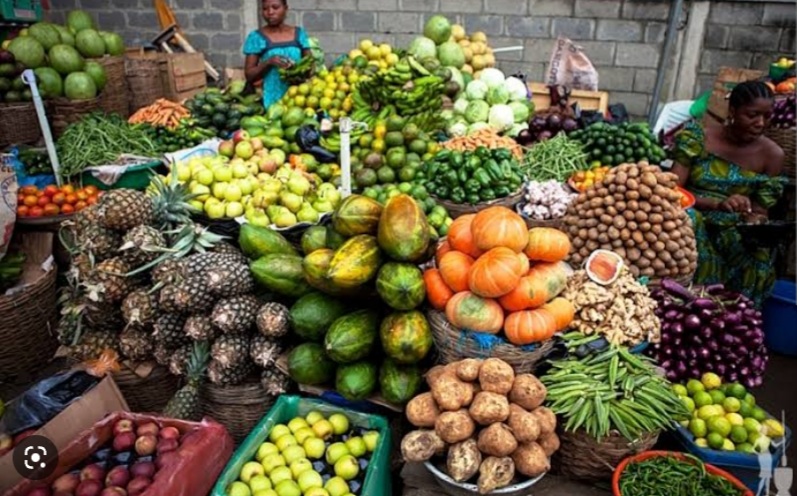
By Bukola Adewumi
About 24.8 million Nigerians in 26 states and the FCT, could experience acute nutrition and food crisis between June and August, following the lingering fuel and cash scarcity in the country.
This prediction is according to the Food and Agriculture Organisation (FAO)’s Cadre Harmonise (CH), a tool used by the Food Security Sector (FSS), partners to calculate food security and nutrition situation in a given location, within a certain period.
The CH is also a tool adopted by partners in the FSS, usually developed on request by the government as an early warning tool, to prevent and manage food and nutrition crisis.
The process in Nigeria is led by the Federal Ministry of Agriculture and Rural Development (FMARD), through the National Programme for Food Security (NPFS), in collaboration with other government agencies.
The programme is with technical and financial support from the FAO, World Food Programme (WFP), Save the Children, UNICEF, Mercy Corps, among others.
According to the report, about 17.7 million people, including 14,000 IDPs in 26 states and the FCT, will be in serious crisis, or worse through May 2023.
The report, which pointed out the Central Bank of Nigeria (CBN)’s Naira Re-design policy as one of the key drivers of the crisis, stated that the withdrawal of the old notes form circulation created serious bottlenecks to households’ ability to access cash, as well as food commodities.
“Insecurity, especially insurgency in the North East states, particularly in Borno, Adamawa and Yobe, still persists. Armed banditry and kidnapping for ransom in some North West states such as Katsina, Sokoto and Kaduna, as well as North Central states of Benue and Niger, have also lingered.
“Prolonged scarcity of Premium Motor Spirit (PMS), commonly called petrol, and the associated hike in its pump price across the states, has led to astronomical rise in transport fares and cost of food products in Nigerian markets.
“Consistent rising price of food commodities and agricultural inputs across Nigerian markets is one of the drivers of food insecurity.
“The general consumer price index shows an increase from 15.7 per cent in Feb. 2022, to 21.9 per cent in Feb. 2023, that is a 39.49 per cent increase within just one year.”
The report further notes that food consumption level has remained inadequate and below the desired threshold across most of the states, and that in some local government areas (LGAs) in Adamawa, Borno and Yobe, food consumption is so critical that they have fallen under the crisis phase.
“During the current analysis period, most of the households in the analysed areas adopted crisis to worse level livelihood coping measures,. and the implication is that most households had irreversibly disposed of their assets to meet their food and non-food needs.
“This is most common in the insurgency affected states of Adamawa, Borno and Yobe, where the number of affected LGAs stand at four, 13, and 10 respectively.
“The nutrition situation deduced from the IPC Acute Malnutrition Projection for January to April, 2023 covering, Adamawa, Borno and Yobe, as well as Katsina, Sokoto and Zamfara, shows prevalence of crisis to worse nutrition situation across the states.
“Borno State has about 18 LGAs whose nutrition status is classified in phase 3, and same for six LGAS in Yobe.”
It stated that in Adamawa and Sokoto states however, the affected LGAs are largely classified as Under Pressure (Phase 2).
“In the North West states of Katsina and Zamfara, 17 and 10 LGAs respectively are in phase 3.
“In some inaccessible areas of Borno State, the prevalence of global acute malnutrition has reached very critical levels (Phase 4 and Phase 5).
“During this current analysis period, there was no evidence to enable the objective analysis of mortality. Thus, across states, mortality outcomes were not analysed.
It however, noted that past trends indicated a steady reduction in the under five years Crude Death Rate (CDR) across the states.
Also listing other factors driving acute food and nutrition insecurity conditions, the report stated that job losses and reduction in household income due to the long-term effects of COVID-19 pandemic, had forced most households to adopt emergency livelihood coping strategies.
The March 2023 cycle of the Cadre Harmonise analysis covered 26 states namely: Abia, Adamawa, Bauchi, Benue, Borno, Cross-River, Edo, Enugu, Gombe, Jigawa, Kaduna, Kano, Katsina, Kebbi, Kogi, Kwara, Lagos, Nasarawa, Niger, Ogun Plateau, Rivers, Sokoto, Taraba, Yobe, and Zamfara, and the Federal Capital Territory (FCT).
The report recommended that the government and humanitarian community should sustain the implementation of life-saving interventions of food assistance and social welfare packages to the vulnerable populations in the affected areas.
It also recommended that government, Civil Society Organizations and Private Actors should sustain efforts in facilitating humanitarian access to the inaccessible/hard-to-reach areas, so as to provide basic assistance to those in critical need.
“Sustain/promote various resilience building interventions for households through MSMEs, prioritizing the vulnerable populations to enable them to get a fresh start-up for their livelihood, as well as dry-season agricultural production inputs.
“Continually apply the CH analysis results as a tool for response planning, policy formulation and resource allocation to address the challenges among vulnerable populations and zones.
Thus, states should consistently strengthen and expand the composition of the State Analysis Task Force (SATF) to ensure plurality”, the CH recommended.